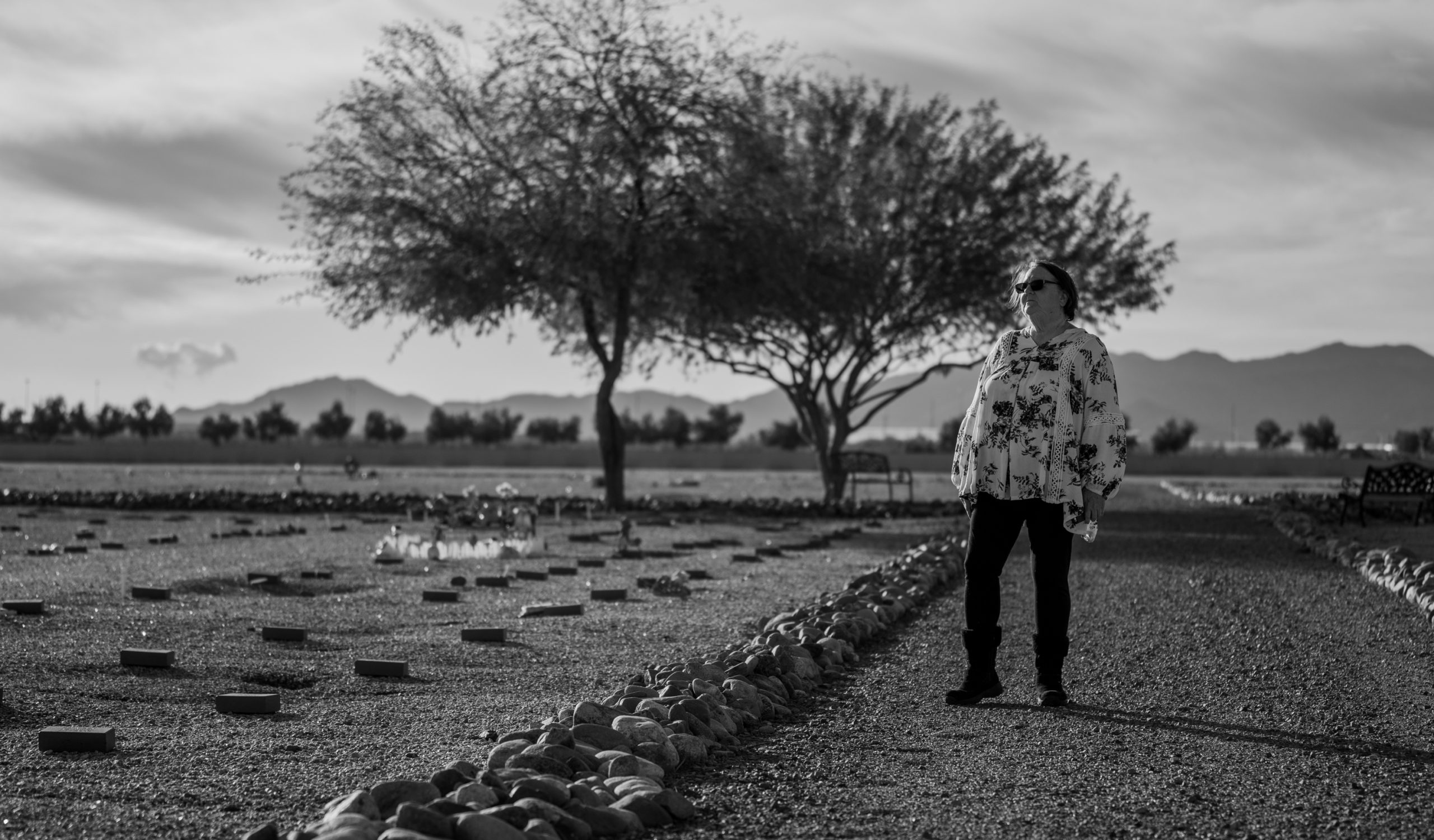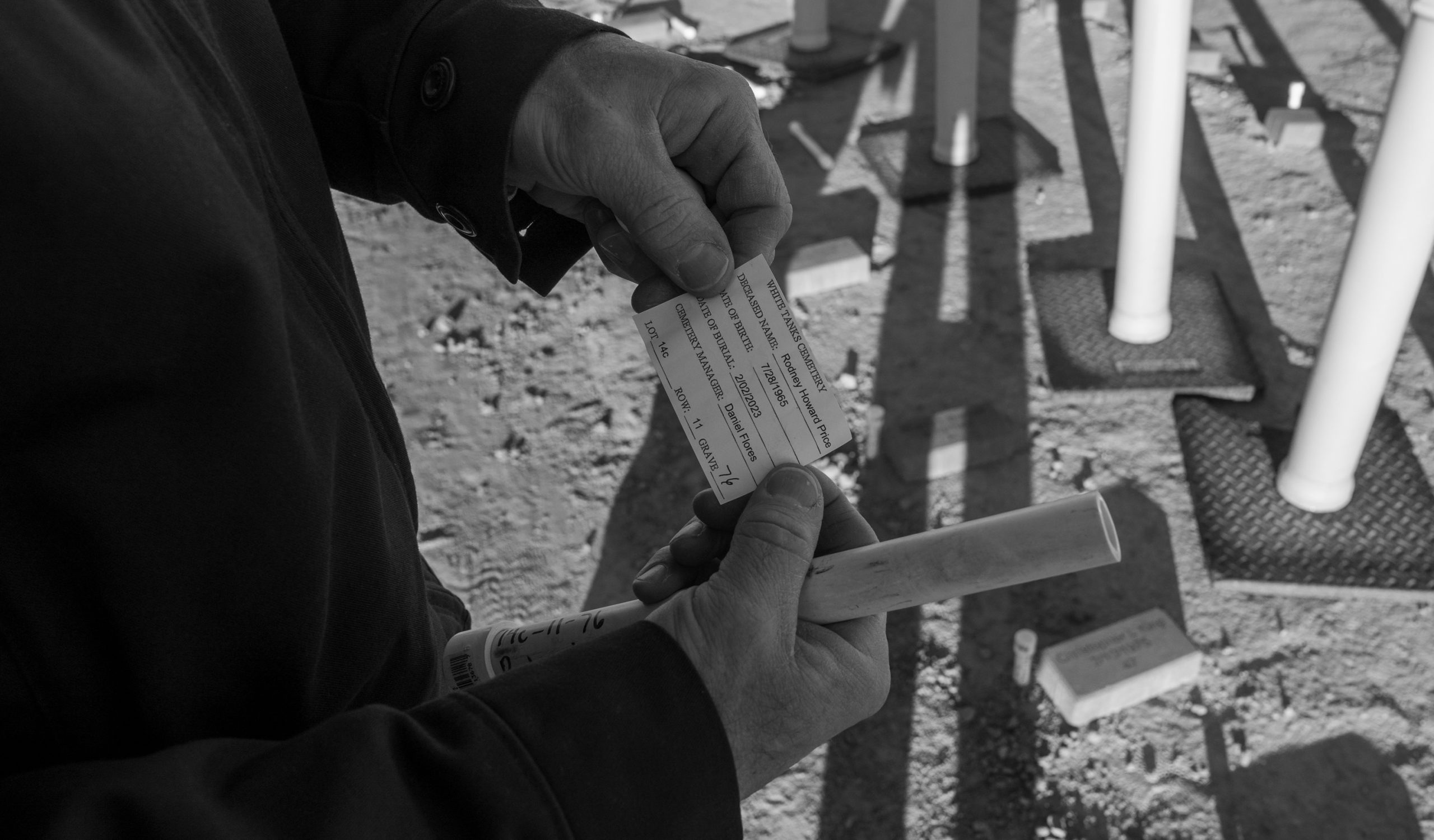“Facing Reality”
When Turner first clicked over to the Find A Grave website, she saw her grandmother’s name in a big white sans serif font along with details about her life and an image of her brick grave marker at White Tanks Cemetery. She was suspicious of the information, but after confirming her grandmother’s birth and death date, she determined its accuracy.
A graver other than Chesser had documented the information about Turner’s grandmother. But Turner still isn’t sure how her grandma ended up at White Tanks Cemetery.
“I wish we were more family oriented to be able to work together and say, ‘Hey, grandma’s gone. Let’s lay her to rest correctly the way she wanted it,’” Turner said.
While she wasn’t able to give her grandma the funeral she would have liked to, Turner said she is grateful that someone was able to step forward and lay her grandma to rest.
“I feel guilty,” Turner said, “but she knows, life has not been easy for us.”
Turner, who now lives in an apartment in Tucson with her husband and two young kids, hasn’t visited her grandma’s gravesite yet.
“I really want to but then there’s that part of me that’s like afraid because that’s me facing reality,” Turner said.
Whenever Turner is ready, she’ll be able to find her grandmother’s gravesite located in lot 13 among a sea of red bricks, one of which reads: “Joyce Maryanna Williams, 1/19/1947, 73.”






















